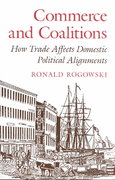Question
1.Why does the asthenosphere transmit seismic waves but does not generate earthquakes? 2.If the asthenosphere does not generate earthquakes, why are the deepest recorded quakes
1.Why does the asthenosphere transmit seismic waves but does not generate earthquakes?
2.If the asthenosphere does not generate earthquakes, why are the deepest recorded quakes as deep as 700 km?
3.What is a Wadati-Benioff zone? What is a Richter magnitude for an earthquake?
4.What is the global distribution of earthquakes in time and space?
5.What can we learn from patterns in this distribution?
6.How can we tell an earthquake from an underground explosion and, more importantly, how can we tell what kind of earth motion produced the earthquake?
7.What is "liquefaction"? How are earthquake predictions made?
8.What are the limitations of such predictions? What is the utility of such predictions? What's in a magma?
9.Name and define three different types of intrusive igneous bodies. Why do different magmas have different viscosities?
10.Which have high viscosities?
What are shield and strato-volcanoes and how do they differ?
11.Why do some eruptions produce shield volcanoes and others strato-volcanoes? Why do some volcanoes explode?
12.Which are more likely to and why? What is the difference between continuous and discontinuous crystallization behavior in a cooling melt?
13.What is the evolution of a plagioclase feldspar crystal and the surrounding melt during crystallization of a magma of any given composition?
14.What is the evolution of mafic minerals in the same setting?
15.What does this have to do with the origin of the diversity of naturally occurring igneous rocks? How can you get a felsic melt from a mafic parent rock?
16.How can you get a mafic rock from a felsic melt? What is the difference in the solidus for a wet versus dry magma?
16.Which is more likely to be dry, a mantle rock or a crustal rock?
17.Why do some rocks melt on decompression and others when buried?
18.What is "decompression melting", anyway?
19.Why are basalts and granites common, and gabbros and rhyolites rare? What is the most abundant volcanism on earth? Aren't you impressed with how much you know?
A separately excited DC motor runs at 1000 rpm on no load when its armature terminals are connected to a 200V DC source and the rated voltage is applied to t he field winding. The armature resistance of this motor is 1. The no-load armature current is negligible. With the motor developing its full load torque, the armature voltage is set so that the rotor speed is 500 rpm. When the load torque is reduced to 50% of the full load value under the same armature voltage conditions, the speed rises to 520 rpm. Neglecting the rotational losses, the full load armature current (in Ampere) is?
Question 8:
A 200/400V, 50 Hz, two-winding transformer is rated at 20 kVA. Its windings are connected as an auto-transformer of rating 200/600V. A resistive load of 12 is connected to the high voltage (600V) side of the auto-transformer. The value of equivalent load resistance (in Ohm) as seen from low voltage side is Two single-phase transformers T1and T2each rated at 500 k VA are operated in parallel. Percentage impedances of T1& T2are (1 + j6) and (0.8 + j4.8) respectivel y. To share a load of 1000 k VA at 0.8 lagging power factor, the contribution of T2(in kVA) is?
Question 9:
A DC motor has the following specifications: 10hp, 37.5 A, 230V; flud/pole = 0.01Wb, number of poles = 4, number of conductors = 666, number of parallel paths = 2. Armature resistance = 0.267 &ohm. The armature reaction is negligible and rotational losses are 600W. The motor operates from a 230V DC supply. I f the motor runs at 1000 rpm, the output torque produced in (in Nm) is?r
Step by Step Solution
There are 3 Steps involved in it
Step: 1

Get Instant Access to Expert-Tailored Solutions
See step-by-step solutions with expert insights and AI powered tools for academic success
Step: 2

Step: 3

Ace Your Homework with AI
Get the answers you need in no time with our AI-driven, step-by-step assistance
Get Started


